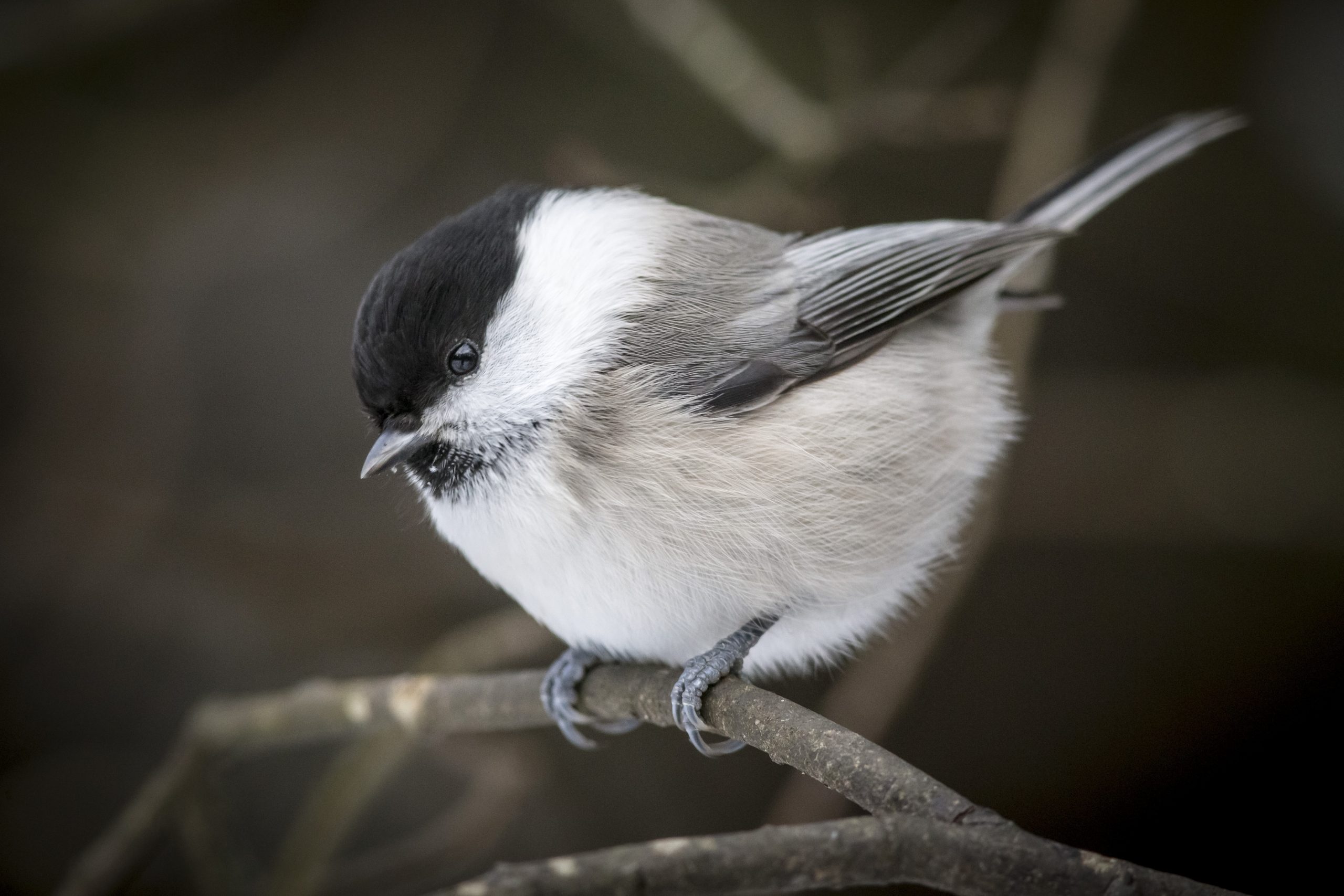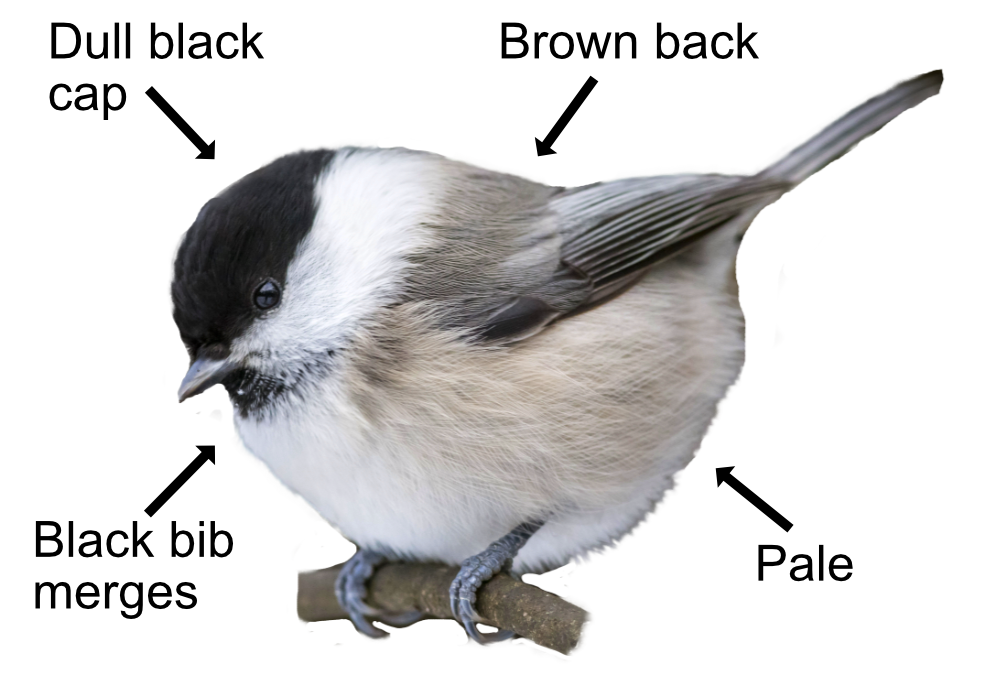
Unlike the Marsh Tit, the Willow Tit is correctly named. It likes willows, sometimes. Although the Willow Tit will live in deciduous woods with willows and alders, especially if they are wet and close to streams, they generally prefer coniferous woods. If you think you have seen a Marsh Tit on a pine tree it is probably a Willow Tit.
The Willow Tit has a brown back with off white underparts, a small all black bill, a pale wing panel (not always obvious), a dull black crown, and small black bib that fades into the breast rather than having a clean line. The Willow Tit looks scruffier than his twin brother the Marsh Tit. He is the messy twin. His call is different too; a nasal "eez eez eez" or a incredibly peeved sounding "tchay" as opposed to a clear "pitchou". It is the best way of telling them apart.

The Willow Tit's bill is not as strong as the Marsh Tit's so their food is slightly different. They eat insects in the summer but then mostly plant material during the autumn and winter. They like smaller and softer seeds such as alder and birch which they will store and save for later.
Nesting begins mid-April. The female excavates a nest in a rotten tree stump close to the ground. She lines it with wood chips and grasses. The size of the hole she makes influences the number of eggs she can squeeze in which ranges from 4 to 11, though more usually about 7. Mum alone incubates the red blotchy eggs for 13 days. Once hatched, dad helps feed the young until they can fly 21 days later. Willow Tits make a new hole each year so need lots of rotten tree stumps.
British Willow Tits are a very sedentary resident, staying within their territories, with only 3,500 pairs found mainly in Central and Northeast England. Their numbers have declined since the 1970s and they are on the Red List. The lack of enough dead wood for nests, because of changes in woodland management, is thought to be a possible cause. They are also parasitised by the moorhen flea. Their typical lifespan is three years and the maximum recorded age was 11 years for a bird who lived near Nottingham.
Similar to the Marsh Tit, the Willow Tit is called 'parus montanus' ('mountain tit') in some books and 'poecile montanus' ('unidentifiable small mountain bird') in others. The person who named them got all confused as the pine trees he saw them in were part of a Swiss mountain forest. Scientists don't get out much.